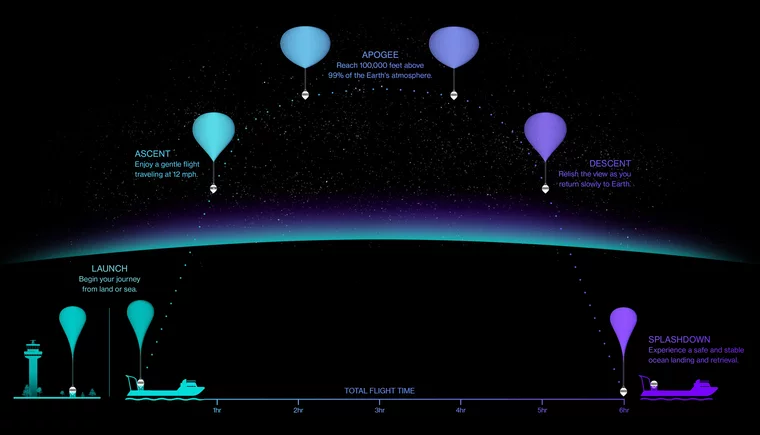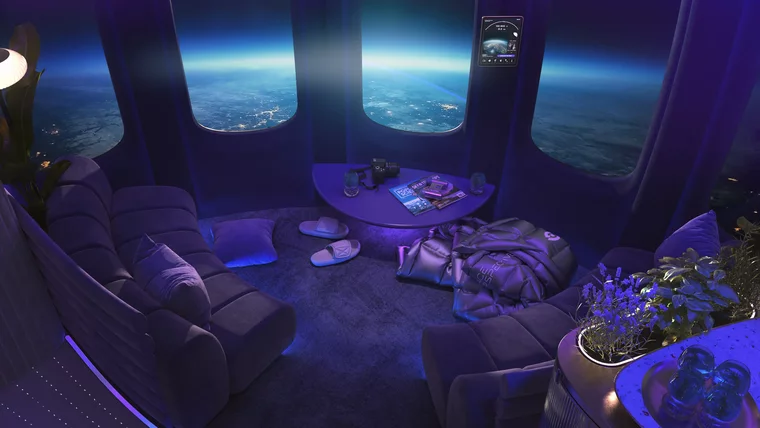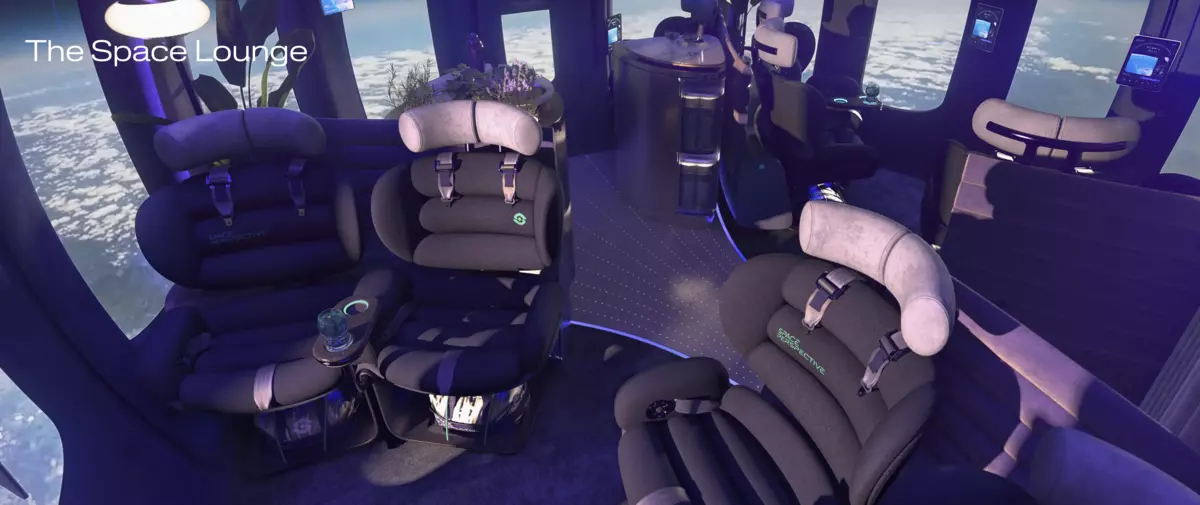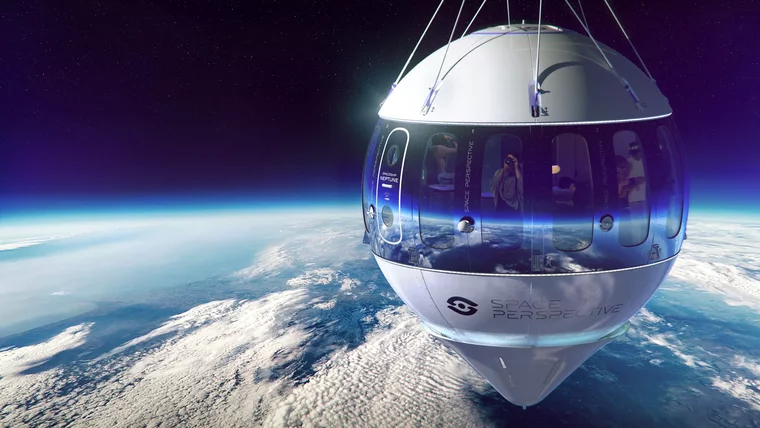Imagine gliding smoothly beyond Earth’s atmosphere, not in a thundering rocket, but in the gentle embrace of a space balloon. This dream could soon be a reality as the American start-up Space Perspective floats closer toward its goal of redefining space tourism and offering thrill-seekers a serene journey to the edge of space in its state-of-the-art balloon.
On August 22, Space Perspective welcomed media representatives to its Seely Space Balloon Facility in Titusville, Florida, where officials discussed the company’s plans to carry adventurous tourists to the edge of space using a novel space balloon.
“At Space Perspective, we are opening space to unprecedented numbers of people through our carbon-neutral Spaceship Neptune that carries eight explorers and a captain on a six-hour, gentle, and astounding journey to space,” Jane Poynter, co-founder and co-CEO of Space Perspective, explained while standing beneath the imposing 700-foot-long tent that encased the project’s backbone.
In the planned passenger experience, customers will launch from land or sea aboard the company’s “Spaceship Neptune.” Instead of rockets, Neptune is propelled by a space balloon that, when fully inflated, is large enough to “comfortably house the Statue of Liberty.”
After launch, Neptune will slowly ascend at 12 miles per hour, taking roughly two hours to reach its apogee of 100,000 feet above the Earth’s surface. The space balloon will then spend another two hours at the very edge of the Earth’s atmosphere, where the company says customers can take in the Earth’s curvature and total blackness of space and have the “quintessential astronaut experience.”
The space balloon and Neptune passenger capsule will descend for two hours, leading to what Space Perspective says will be a “gentle ocean splashdown.” The capsule and passengers are then picked up by the company’s support vessel: Marine Spaceport Voyager.
This tranquil journey to the cosmos doesn’t come without its price. According to co-founder and co-CEO Taber MacCallum, a ticket aboard the Spaceship Neptune currently stands at a staggering $125,000.
And though the six-figure ticket price may appear hefty, it is considerably cheaper than the average commercial spaceflight, which averages anywhere from $500,000 to millions for a 15-minute ride to the edge of space and back.
According to MacCallum, over 1,650 people have already placed deposits to secure a seat on the Neptune, resulting in a backlog exceeding $200 million.


Safety was a central talking point at Space Perspective’s recent press conference, a priority that resonates deeply with potential space tourists.
The adventure tourism industry has been under scrutiny, especially with the recent Titan submersible tragedy and the deaths of all five passengers while touring the Titanic wreckage. Such incidents underscore the importance of stringent safety measures, especially for ventures pushing conventional tourism’s boundaries.
Before welcoming guest astronauts, Space Perspective says it will conduct numerous uncrewed test flights beginning in late 2023.
The company expects the demand for flights to be significant. However, officials say that safety measures and operational scalability will dictate growth rather than market demand.
“As we start to fly with people, we’ll get even more in, so I think what’s generally true about this market, it is operationally limited,” MacCallum said. “We will be limited by how quickly we can safely add more capsules, add more launch facilities and grow our operations, not the market itself.”
Unlike the ill-fated Titan submersible, MacCallum also pointed out that, like all commercial space companies, Space Perspective and its adherence to flight safety is regulated by the Federal Aviation Administration (FAA). Because the space balloon descends to a splashdown, oceanic operations are also regulated by the U.S. Coast Guard.
“So, we go through a licensing process. The basis of that licensing process starts in a series of flights that are without crew so that we can test the backup systems and redundant systems, and then we go into flights with people,” MacCallum said. “So, it’s a stepwise process with a lot of gates that result in a license to fly.”
In an emergency, the Neptune passenger capsule is outfitted with a backup descent system involving four parachutes between the capsule and the space balloon. “This kind of parachute has been used by space-faring agencies on more than a thousand flights over decades with a 100 percent success rate,” Space Perspective notes on its website.
“We’d only ever use a parachute in the event of an incident or a failure,” said Taber MacCallum, the founder and co-CEO of Space Perspective. “So, the parachute is always there as a backup, but ascending and descending in a balloon is the safest way to fly.”


In contrast to the austere interiors of other space vehicles, images of the Neptune passenger capsule depict a sumptuous cabin complete with reclining seats and a minibar.
According to Space Perspective, the pressurized compartment can comfortably seat eight passengers and one pilot and includes interactive lighting, a sound system, “a bar for sky-high toasts,” stable Wi-Fi connectivity, and “a fully-equipped bathroom with an unbeatable view.” The Neptune also includes the largest windows ever flown in space, providing customers 360-degree panoramic views.
According to Space Perspective, Neptune’s “space lounge” can be modified to incorporate additional hospitality features, such as a venue for a space wedding or a “unique dining experience.”


Compared with other space tourism ventures, Space Perspective offers a more comfortable and less expensive path for the average person to view space and confirm that the Earth is round. However, officials say the Neptune space balloon is meant to offer a supplemental path to view space, and the company isn’t trying to directly take on other commercial space outfits like SpaceX, Virgin Galactic, or Blue Origin.
“It’s a different experience, and I really don’t look at SpaceX or Blue or Virgin as really competitors. We work very closely together in the regulatory side, the safety side,” said MacCallum. “We’re sort of like the entry, right? We’re the slowest to go up, the smoothest. So, I think from doing our kind of experience, people might then go onto Blue or Virgin, but it’s certainly designed to be the most accessible.”
Following its strategic roadmap, Space Perspective anticipates the inaugural crewed voyages of its novel space balloon will begin sometime in 2024. If all goes according to plan, Space Perspective hopes to expand the frontiers of space tourism and offer people a profound, soul-stirring way to satisfy their cosmic curiosity.
Either way, with companies continuing to innovate and unlock space’s potential, one thing is clear: space tourism isn’t merely a dream; it’s the future.
Tim McMillan is a retired law enforcement executive, investigative reporter and co-founder of The Debrief. His writing typically focuses on defense, national security, the Intelligence Community and topics related to psychology. You can follow Tim on Twitter: @LtTimMcMillan. Tim can be reached by email: tim@thedebrief.org or through encrypted email: LtTimMcMillan@protonmail.com

